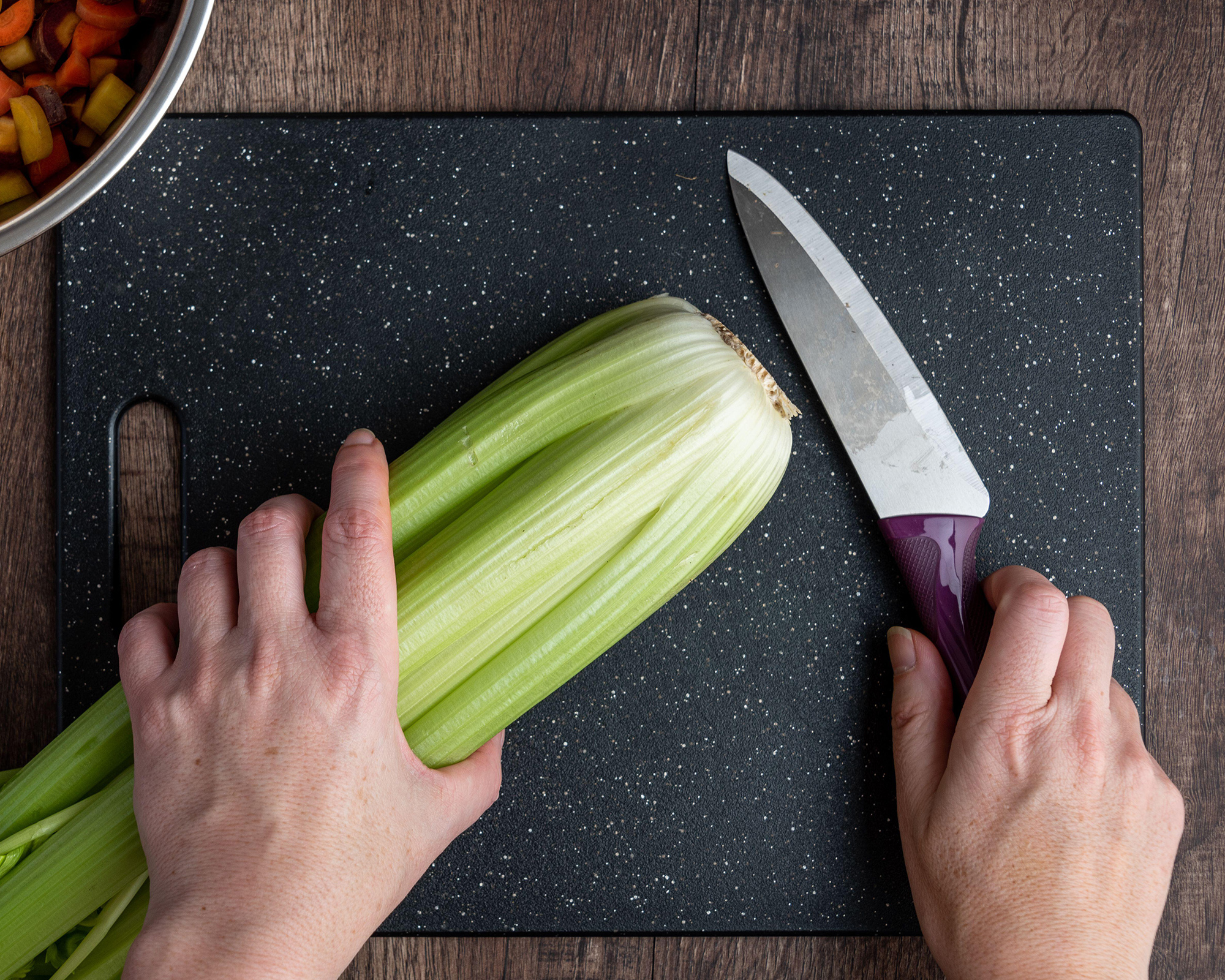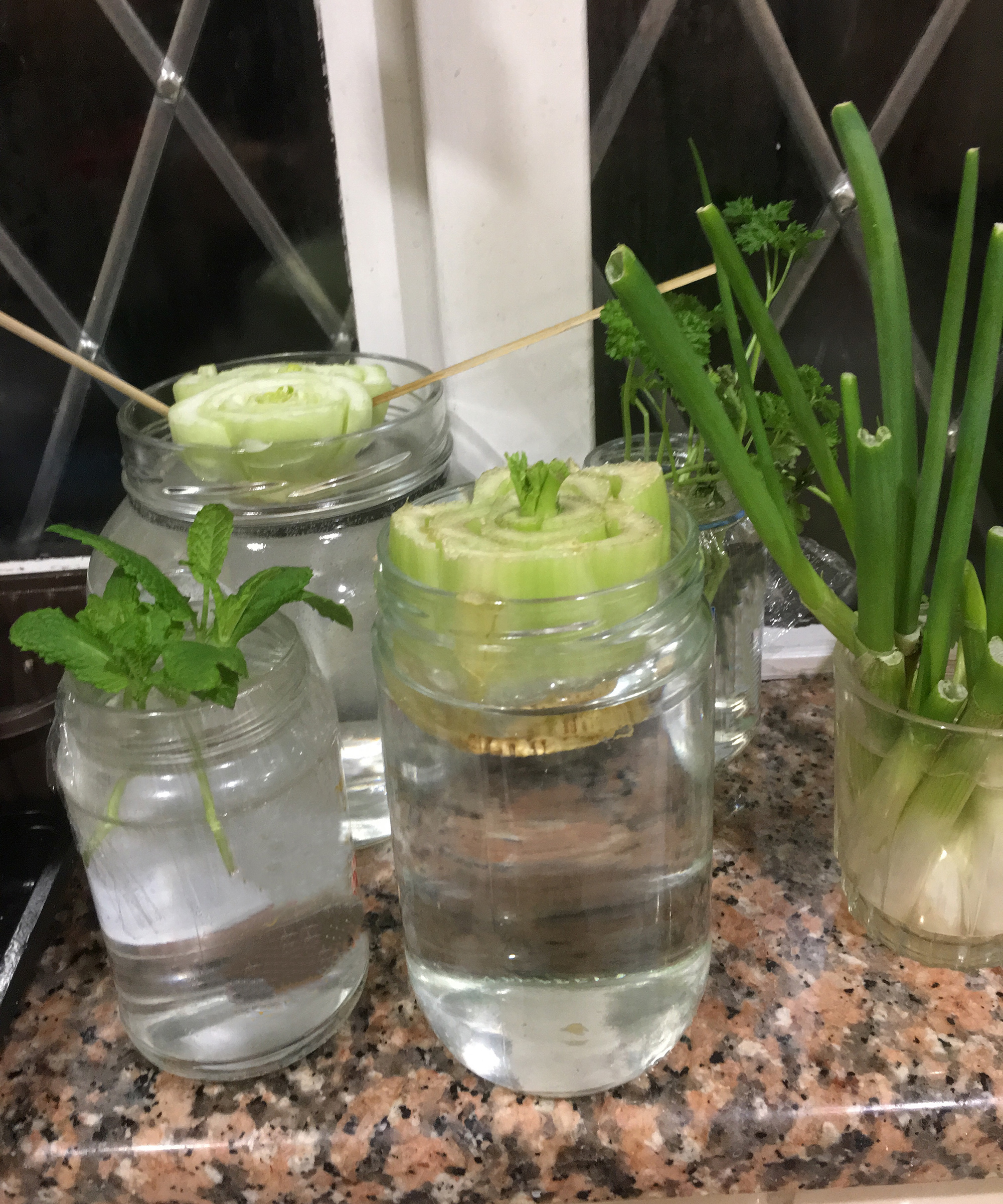Growing celery from scraps: how to do it in 5 simple steps
Growing celery from scraps is a brilliant way to recycle your leftovers and get delicious veg to harvest for free!


Did you know that growing celery from scraps is an easy way to make use of something you'd usually throw away in the trash? That's right! You can get fresh veg for absolutely free. Besides saving you money, it’s quicker and surer than sowing the seeds, which can be tricky.
We’re all familiar with the unique spicy taste and crunchy ribbed stalks of celery (apium graveolens), perfect for dipping in cream cheese in summer (or for garnishing a delicious Bloody Mary), and braising in warming stews in winter.
Celery, originally a marshland plant, is a cool season crop which loves rich, moist soil and mustn’t dry out. It’s easy to learn how to grow celery from scraps, and you could be adding your recycled home-grown veg to your kitchen garden ideas in just a matter of months.
5 expert tips for growing celery from scraps
Now, this only works if you buy your celery in bunches. You won't learn how to grow celery from scraps if you're buying pre-chopped sticks or small pieces. But buying your celery as a fresh bunch is super common and usually cheaper than the processed versions.
If you're used to buying celery pre-chopped then surely this idea of how to get free plants is enough to make you switch!
1. Remove the bulbous end of your celery bunch
Cut off the bulbous end of a bunch of celery to about 2 to 3 inches (5-8 cm) from the base. And before you find them a place in your budget backyard ideas, you need to help your bulb to sprout.
Do this by placing your stump in a small bowl, or jar of clean, warm water, with the top of the bulb above the surface and the base of it below.
Martha Stewart recommends using four cocktail sticks to pierce the base of the bulb. This allows you to hold the celery scrap in place on the base of the bowl. Alternatively you could also use one thick skewer through the whole bulb as pictured in point two.

2. Keep refreshing the water
Changing the water in your chosen vessel is crucial when growing celery from scraps. Change the water every couple of days and this will help your bulb to sprout. And keep it topped up with fresh water, as the re-growing stump will soak it up.
Your bowl should be kept in a light place out of direct sunlight – treat it like a kitchen plant for example. But really this can be any place indoors, on a windowsill (not south-facing) or under an LED grow light. Then wait for the magic to happen…

3. Pot on your celery scraps
After a week or so, fresh green leaves will appear from the centre of the bulb. Now’s the time to pop your sprouting bulb into a pot of peat-free multipurpose potting compost.
Make sure the newly sprouted leaves are level with the surface of the soil. Grow on in the container, placing it outside from late spring to early summer. Water it thoroughly as it grows, and feed with liquid fertilizer every two weeks during the growing season.

4. Plant it out in your veg patch
You can continue growing vegetables in pots if you wish, and make them part of your small vegetable garden ideas. Alternatively, you can plant your new celery plant directly into the garden once frosts are past.
The RHS advise hardening off plants (gradually acclimatising them to outdoor conditions) and covering them with horticultural fleece if a late frost is forecast.
Celery loves rich, moist soil. Give it a cool spot in the garden, with about six hours of sun a day. Plant 6-10 in (15-25 cm) apart in rows 12in (30cm) apart. If you follow a crop rotation system for healthy veg (and if you don't, you should!) then plant celery in a spot that previously grew legumes, roots or onions.

5. Harvest your celery plants
Now, we've come to the exciting bit of when to harvest vegetables! After around three months, your celery will be ready for eating. Cut the stalks when they’re at least 3in (8cm) long – cutting encourages the plants to produce even more stems. Keep harvesting individual stalks or allow them to mature all together.
Organic gardening guru Bob Flowerdew recommends letting some celery plants go to flower, as the blooms attract beneficial insects, especially predatory wasps. The flowers go on to produce seed which you can sprinkle onto roast fish, or grind with salt to make your own celery salt - perfect for making a Bloody Mary!

Can you grow celery just from a stalk?
Once you’ve cut the celery stalks from a bunch, you’re left with the bulbous base or stump, the bit you’d normally throw away – this is the part you need for re-growth. It contains the basal plates, where the roots and stem meet, from which new vegetation can grow. A single stalk won't contain the elements needed for growing celery from scraps.

How many times can you regrow celery?
Celery is a biennial, so once it’s planted in the ground it should produce for another year. You’ll need to replace plants after that. If you’re growing it indoors, you’ll probably be able to regrow only once.
But if you learn how to grow celery from scraps you'll continue to get a few stalks for free. Not to mention you'll have the fun of watching the plants grow. It’s a great garden activity for kids, too. Try regrowing other veg with basal plates too – spring onions, lettuce, sweet potato, garlic.

Can you grow celery in water only?
You can grow your celery bulb in water if you don’t have any garden space. Once the new green leaves appear, either use them for making pesto or let them carry on growing for a few weeks more and you’ll get small stalks.
Ideally at this stage the plant needs nutrients, so it’s best to pot it on into compost, or grow it on in water if you’re lucky enough to have a hydroponic system.

Geraldine is a gardener and garden writer, who has worked for over 12 years in historic public gardens and private gardens around London. She has written articles for Easy Gardens, Which? Gardening and Women’s Weekly Gardening Special magazines and for gardeningetc.com. She also edited the book ‘Britain’s Favourite Plants’ for the RHS.
